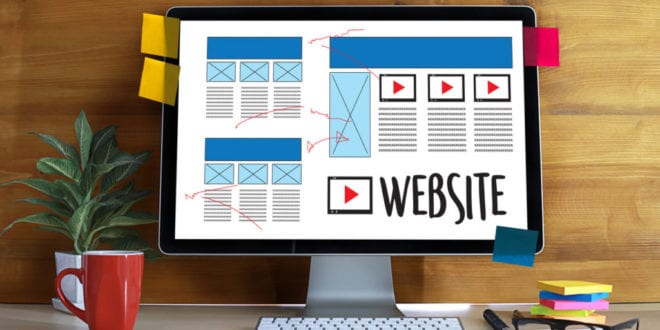Website design has been a topic in recent years that many people are interested in, no matter if they are small and medium-sized business owners or individuals, and regardless of their level of knowledge.
We can say with certainty that today if you do not have a website as if you do not exist.
Most of our readers are probably familiar with how websites work, but for those who are beginners, we decided to make a good starting point with references that will guide them into this process. So, let’s start.
Web hosting
Hosting is where you need to set up your website. While it is possible to build a website on your computer and never publish it online, it is a bit pointless. No one will be able to see it but you. Well, the first thing you need to do is find a web hosting provider. There are several types of web hosting to choose from: Free Web Hosting, Dedicated, VPS and Shared Hosting, Colocation Hosting, and Cloud Hosting. You can check unbiased web hosting reviews on AlterWebHost.com to better understand which kind of hosting should you choose for your website.
Most people choose free web hosting without thinking too much, but there are many disadvantages to this solution. In most situations, you do not get enough storage space, you may be forced to allow their advertisements on the site, or you may have data flow restrictions. We recommend this type of hosting only for testing websites or for personal presentations that are not demanding. For all others, we recommend professional web hosting.
Choosing a domain

Whether you need a domain name again depends on your requirements. Although a domain name is mandatory in most situations, there is also an option to choose domain-free hosting, but this is not a practice. A domain name provides extra branding for your site, making it easier for users to find and remember you. Here, too, there are free and paid options.
Site planning
As in any business, so in web design, a detailed plan and strategy for the site’s appearance should be made initially. The first and key step after choosing a domain and hosting is to identify the target audience your site will be targeted for. Once we know who the visitors are, what their interests and needs are, then we can create customized content much easier.
This is complemented by another equally important step, namely keyword research. It is unlikely that users will search for you beyond the site name unless you have already created a recognizable brand. Choose longer, more specific keywords and respond to the queries users type in search engines with your content.
In addition to this, it is always good to look back at your competition and consider their keyword and marketing strategy.
What else is needed?

Site Type Selection – Decide what you want to present. Is it news, information, products or services, portfolio, etc.
Navigation – affects the information structure of the site, so it should be well designed to allow users to easily navigate the site.
Content is the most important factor – for the success of any site, so this should be given the utmost attention. Make your content useful to users, so much so that they will want to share it and link to it.
Be aware that users are paramount, so do not tailor the site to your needs, but focus solely on the user. This is where many site owners go wrong and the reason why their online business is not thriving. As suggested by the Mensis Studio web design team always research current web design trends and look for sites that are successful or ask for professional help.
Build your site page by page
To effectively create a website, you must have a clearly defined workflow. We will explain this in the example of creating a site for clients.
The specification of the client request is initially taken. It is common practice for a graphic designer to do website design in Photoshop based on that. After the design is adopted, the resulting PSD file is forwarded to the web developers who do the coding and add the required functionality that the site should have. This process can be further enhanced by the use of wireframes and prototypes in the initial phase of communication with the client.
Creating a site requires that you dedicate it to each individual page. To create a website you need to know HTML, CSS, CMS and web site editors.
How to publish a website?

Website publishing involves transferring all the pages you created in the previous step to the hosting provider explained in step 1. You can do this either with the tools that come with your hosting package or through an FTP client. If you are unsure about what to use, contact your hosting provider.
Website promotion
The easiest way to promote your site is with SEO optimization from KeeverSEO.com. Create your content so it ranks well in search engines. SEO is a time-consuming process that requires hard work, but it is a key factor for the success of your site.
Site maintenance
Maintaining a site can be a difficult and tiring job, but in order to maintain visitors and keep the site looking good, this activity is necessary. The site is a living thing and one should constantly work to improve it using various testing techniques such as the A / B method, improving the visual experience and improving UX (user experience), but also on the constant development of content.
We hope that this article was able to give you a good answer to the question – how to create a website? If you find this topic interesting and want to learn more, then the internet is full of tips and keep exploring.
If all this seems complicated or you do not have enough time to devote yourself to learning all the technologies you need, you can hire a professional web design agency to do all this for you.
 Imagup General Magazine 2024
Imagup General Magazine 2024



